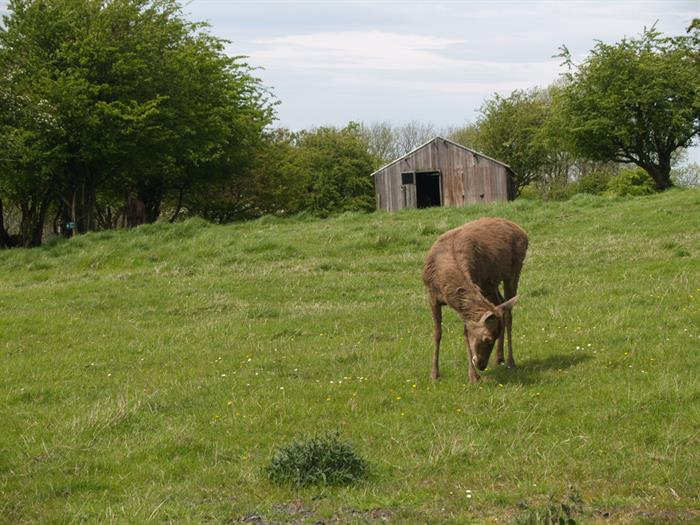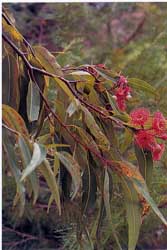Farm Diversification
How do you Diversify on a Farm?
Many farms today are under financial pressure, with traditional enterprises such as cattle and sheep becoming a less reliable source of income. Farmers are more than ever susceptible to such things as changes in the international market place, land degradation problems, drought and flood, changing cost structures in the market place, etc.
One solution is to diversify, creating more than one source of income for a farm. In essence, the strategy means that instead of depending mainly on one type of animal or crop for farm income, there is income generated by several different sources.
Possibilities
 Grow something different, or do something different with what you grow.
Grow something different, or do something different with what you grow.
With a little creative, lateral thinking, there are all sorts of ways you can make money from a farm property. You already have a major asset in your land, and it might not be too difficult, or disruptive, to develop a supplementary money making venture such as one of those following. In due course, such a new venture may develop into a major part of a farm activity, or simply remain a small supplement to the main source of income.
Accommodation
Farmers in some areas do good business providing on-farm accommodation to tourists and other travellers. This may be in the form of Self contained cabins, providing Bed & Breakfast within your own home or Camping facilities. Promoting such a venture may be relatively easy and inexpensive to set-up. Contact local or state tourist authorities, or motoring organisations (e.g. RAC, AA) for information on licensing details, standards and marketing. (Before anything, check local planning regulations i.e. certain permits may be required before operating this type of enterprise).
Depending on what type of accommodation is being offered, you must consider things such as what space will be available, shower and toilet facilities to be used, and what catering will be provided and how much time must be spent with guests. For instance, offering primitive camping facilities would be inexpensive to start up and require little time from the owners, yet would bring a lower return. A bed and breakfast would involve more effort, cost and time, such as cooking breakfast and acting as host, yet would provide a much higher income.
Tourism
Farm tourism is a growth industry. For many barely viable farms, a tourist venture can provide a valuable second source of income. These may include such things as a farm shop, guided tours, open gardens, adventure activities (e.g. trail rides, canoeing, etc.), creating an exhibition area (e.g. a museum, animal show etc.), restaurant, or a working farm experience.
Gardens surrounding farms in England, New Zealand and some other countries are often opened to the public. A fee is charged to explore the garden, sometimes guided by the a family member; sometimes left to your own. Similarly, sections of farm buildings, or a farm house may be converted to a gift shop, a craft shop, a small museum, or a produce shop. There is a high maintenance component to such a venture, to ensure that the visitors feel that they have received value for money.
Farm tours may be developed, to show paying tourists various aspects of farm operation. Horse riding, hiking, picnicking, bushwalking, abseiling, canoeing and other activities may be appropriate to some properties. Properly organised, any of these can be a good source of revenue.
Agroforestry
 Trees can be planted on boundaries, scattered through paddocks, or in blocks; to be harvested and sold for timber at a later point in time. In the meantime, the land around the trees may or may not, still be used for grazing animals. Some rapid growing trees (e.g. Paulownia), under good conditions, may be able to be harvested within a few years of planting, although most agroforestry is usually a long term prospect, taking one or more decades to produce a harvest.
Trees can be planted on boundaries, scattered through paddocks, or in blocks; to be harvested and sold for timber at a later point in time. In the meantime, the land around the trees may or may not, still be used for grazing animals. Some rapid growing trees (e.g. Paulownia), under good conditions, may be able to be harvested within a few years of planting, although most agroforestry is usually a long term prospect, taking one or more decades to produce a harvest.
Your choice of tree variety is critical. If you want to graze animals under trees, you will be advised to avoid dense planting or planting species that deter the growth of grass (e.g. avoid pines and other conifers). Different trees are suitable for different markets, some being high value timber used in things such as furniture making, others may only be used for housing frames, pallets, or wood chips. Proximity to markets may influence what is grown - but remember, it may take decades to reach harvest, so consider where the market may be in the distant future.
Trees which may be considered for agroforestry include:
- Quercus species (Oaks).
- Acacia melanoxylon (Blackwood).
- Allocasuarina torulosa (She-oak).
- Castenospermum australe (Black Bean).
- Eucalyptus calophylla, camaldulensis, microcorys, propinqua, regnans.
- Fraxinus excelsior (European ash).
- Grevillea robusta (Silky Oak).
- Lophostemon confertus (Brush Box).
- Melaleuca leucadendron.
- Platanus acerifolia (London Plane).
- Paulownia tomentosa.
- Pinus canariensis, caribaea var. hondurensis, ponderosa, radiata.
- Populus delatoides (American Black Poplar).
- Toona australis (Red Cedar).
(All of the above are suitable for sawn timber and many also have other uses).
Animal Alternatives
Try thinking about different animals; such as angora goats, deer, dogs, cats, ostriches, alpacas, emus, crocodiles, crayfish, etc. There are farms that make money from all of these, and other types of animals as well. A kennel or a cattery can make money from breeding animals and boarding pets when owners are on holidays. The pet business is large, and opportunity always exists for a new operator offering a quality service. Many pet owners have the money and inclination to spend on their pets, but are often hesitant to put them into kennels which are "not as comfortable as home". Providing clean, comfortable accommodation and a caring atmosphere will ensure ongoing business.
There is a growing demand for exotic animals (e.g. ostriches, deer, alpacas etc.), and the products they produce. These are however new industry sectors in which both supply and demand are increasing in a relatively unpredictable ratio. As such, they are high risk sectors which may lead to high profits, but could equally lead to big losses.
Cut Flowers and Foliage
Some types of cut flowers (e.g. bulbs and annual flowers), can require a lot of attention; and these may not be an ideal supplementary enterprise. Other cut flowers, such as roses, proteas or Geraldton Wax (i.e. Chamaelaucium), are woody shrubs. Once established, these plants require relatively little attention, apart from protection from livestock and spraying against pests and disease (provided the climate is suitable for the variety). Foliage used in floral arrangements can also be grown and sold to the cut flower industry.
Suitable Low Maintenance Cut Flowers and Foliage Plants:
- For temperate climates: Roses, Proteas, Carnations, Thryptomene, Telopea (Waratah), Spinning Gum.
- For dry temperate climates: (Banksias, Chamaelaucium).
- For warm climates: Orchids, Heliconias, Tropical proteas, Tropical grevilleas.
Community Markets
Community markets can be very profitable, if you are selling the right product in the right market. To be successful, you need to experiment; trying different markets, and also trying different products. Some ideas for market products include:
- Fresh produce, eggs, honey, etc.
- Crafts or hand-crafted items (dolls, wood furniture).
- Home-made foods (preserves, pies, sauces, etc.).
- Hand-made clothing.
- Value added products (Spun wool, goat's cheese).
Value Adding by Processing Farm Produce
Things which are already produced by a farm may be made more marketable, and sold for a higher price, if they are used to produce something beyond the raw product. Wool shorn on a farm can be processed and used to produce garments. Dairy products can be use to produce cheese or yoghurt. Animal skins may be tanned and used to produce various leather products. Crops such as fruit & vegetables can be used to make preserves. These products may be sold through a farm shop, or local retail outlets.
The major consideration is the price of the necessary equipment to "value add" versus the selling price of the end product. If you do open a retail shop, then producing some of your own product, while often work intensive, can give a very high return on the investment.
OTHER IDEAS
Farms have found success by diversifying into many other areas, including:
- Starting a plant nursery.
- Planting an orchard or vineyard.
- Earth worm farming.
- Leasing land for events (shows, meetings, markets, billboards etc.).
- Agistment: lease land to other farmers.
- Subdivide (if you are desperate).
- Running courses/ workshops.
- Hiring land for trials (experimentation) to large companies (e.g. to field trials).
- Share Farming a section of the property.
LEARN MORE
Do you work on a farm or manage a farm? Learn with ACS to improve your knowledge of farm management, agricultural marketing and much more. Take a look at our wide range of Agriculture Courses, with a choice of study levels and wide array of subjects covered.
If you have any QUESTIONS or need help deciding what course to study, please do get in touch with our Agriculture specialists today, or phone us on (UK) 01384 442752 / (International) +44 (0) 1384 442752 - we will be more than happy to help you.
[15/12/2025 21:52:11]